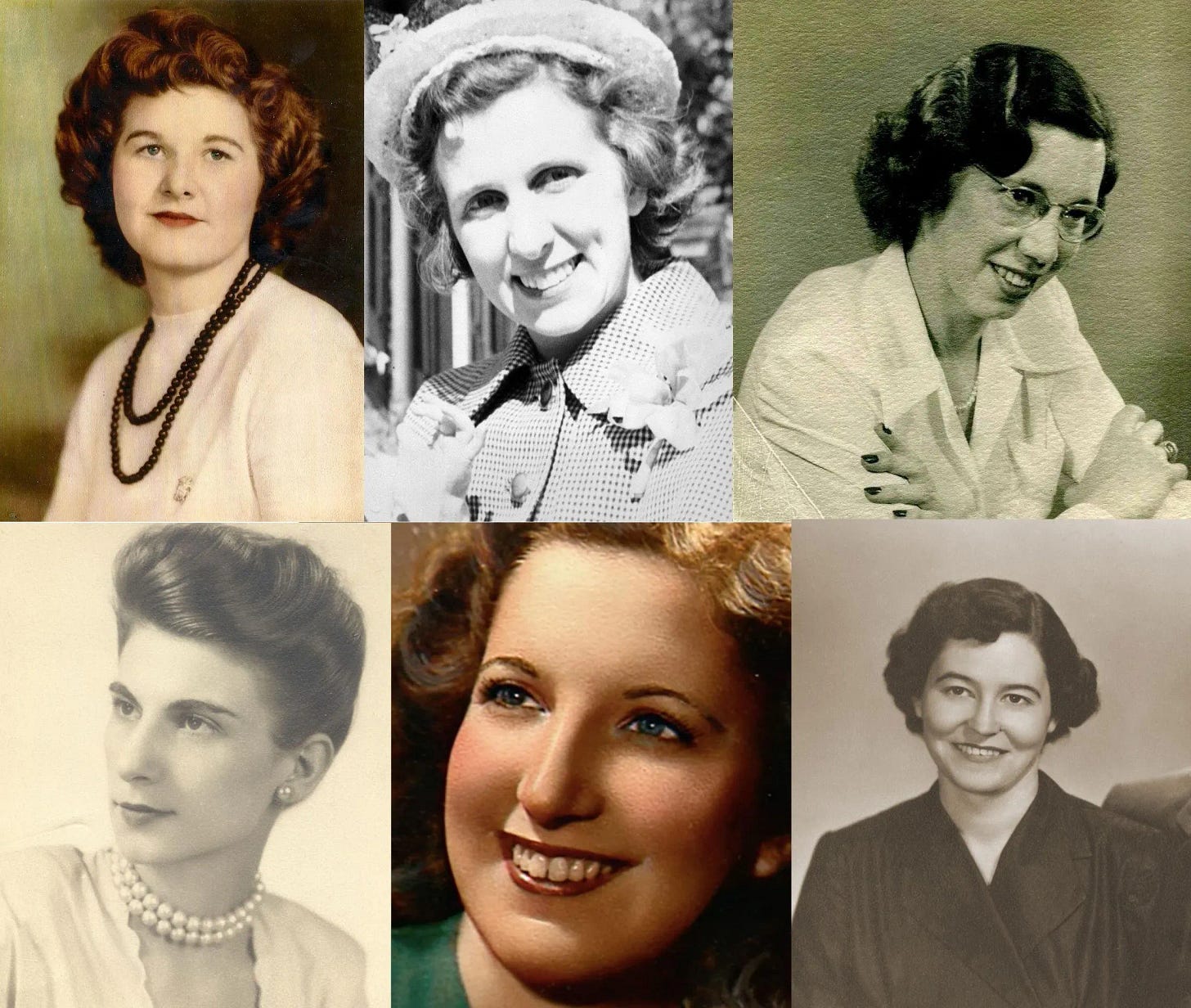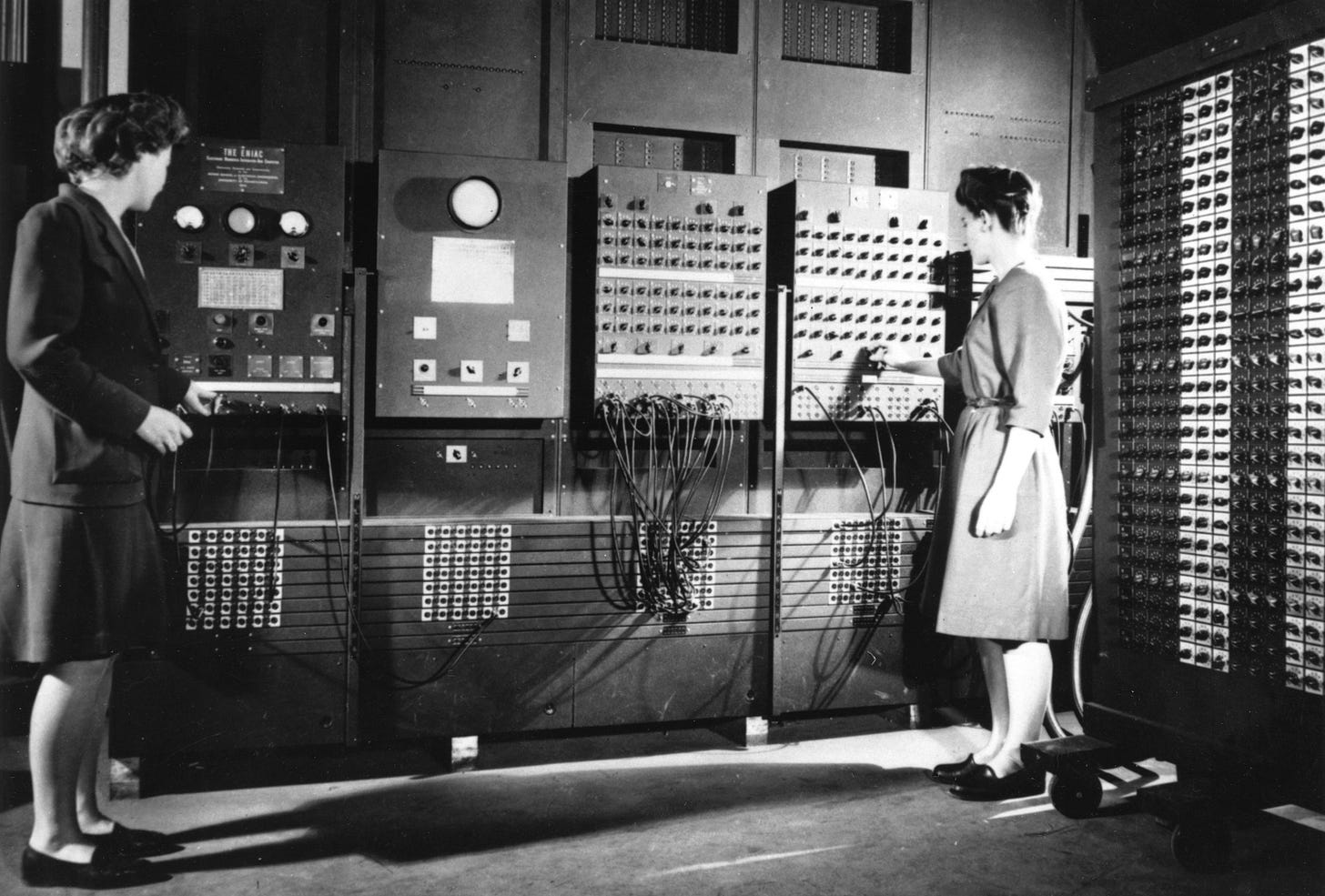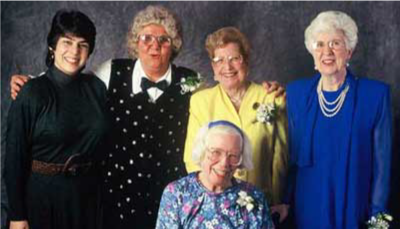The Incredible True Story of How 6 Women Programmed the First Computer
and the outrageous reason why you probably didn't know about it
You know what was developed in 1942? The Electronic Numerical Integrator and Computer (ENIAC) – the world's first fully electronic, digital computer. It was created as part of a secret American project during World War II to improve the accuracy of artillery trajectories, but it would become the blueprint for the modern computer.
To make this happen, the US Army recruited people who could essentially be "human computers" to calculate, by hand, thousands of complex mathematical equations. Already, count me WAY out.
Among those people were six remarkable women: Betty Snyder (later Holberton), Kathleen McNulty (Mauchly), Jean Jennings Bartik, Ruth Licherman (Teitelbaum), Frances Bilas (Spence), and Marlyn Wescoff (Meltzer), who were about to change the world.
This is a free post to give you a sense of the breadth of stories you can expect to enjoy if you subscribe to Today I Learned Science! Please consider upgrading to a paid membership to help support this channel’s work! Thank you!!

These women were eventually selected to operate the ENIAC because they proved to be the most mathematically advanced in their group. This was a HUGE deal because up until this point, women were only allowed to do computing tasks. To now be machine operators responsible for programming the entire circuit of the computer was, in a word, revolutionary.
While John Mauchly and J. Presper Eckert invented and built the actual ENIAC machine, the hard programming was done by these six women. And this wasn't your typical computer – this machine stood 8 ft tall, 80 ft wide and weighed over 60,000 lbs!
At its first official demonstration, ENIAC added 5000 numbers together in just 1 second. Then it calculated the exact path a shell fired from a gun would take before it even reached its target. The technological leap was mind-blowing – 1000 times faster than WWII machines and 2,400 times faster than a human brain.
Surprisingly, or perhaps not so surprisingly, the six women who made this possible were not invited to the demonstration.

The journey to this breakthrough was anything but easy. These women were manually programming the first electronic computer before any programming languages had even been invented. Imagine having to do 40 hours of calculations before you could start programming! It was surprisingly physical work too. These ladies often crawled into the machines fixing burnt out vacuum tubes, assessing parts and other components to "debug" issues, all while taking detailed notes on every small change.
Although their immediate male colleagues recognized their contributions, their role in developing ENIAC and modern computing wasn't made public until the 1980s. And how it came to light is seriously unbelievable.
Kathy Kleiman, a young computer programmer, found a picture of the ENIAC women in the archives of the Computer History Museum in California. When she asked who these women were, the museum curators told her they were "just models hired to make the machine look better." Thankfully, Kathy didn't buy it and decided to investigate further, which is when she uncovered the truth.
Kleiman worked with a colleague to find all six women and help share their story with the world. The result was the ENIAC Programmer Project, which contains all documents, speeches, and recordings collected during her research of the "ENIAC 6."
This led to all six women being inducted into the Women in Technology International Hall of Fame in 1997 with a subsequent award-winning documentary titled, The Computers: The Remarkable Story of the ENIAC Programmers.

One of the most empowering aspects of this story is the sisterhood these women formed. Despite coming from diverse backgrounds – Snyder was a Quaker, Wescoff and Lichtermann were Jewish, McNulty was Catholic, and Jennings a Protestant – they got along beautifully. In fact, Jennings later discussed how she believes their diversity is what made them such a fantastic team and lifelong friends.
Every time you use a smartphone, laptop, or any digital device, you're building on the legacy of these six extraordinary women who programmed the world's first computer. Their story reminds us that innovation often comes from those who have been pushed to the margins, those who must work twice as hard to be recognized half as much. The ENIAC 6 didn't just change technology—they paved the way for generations of women in STEM who would follow. Their brilliance, persistence, and teamwork across differences literally changed our world forever. That's a legacy worth celebrating not just during Women's History Month, but every time we power up a device and connect with the digital world they helped create.






